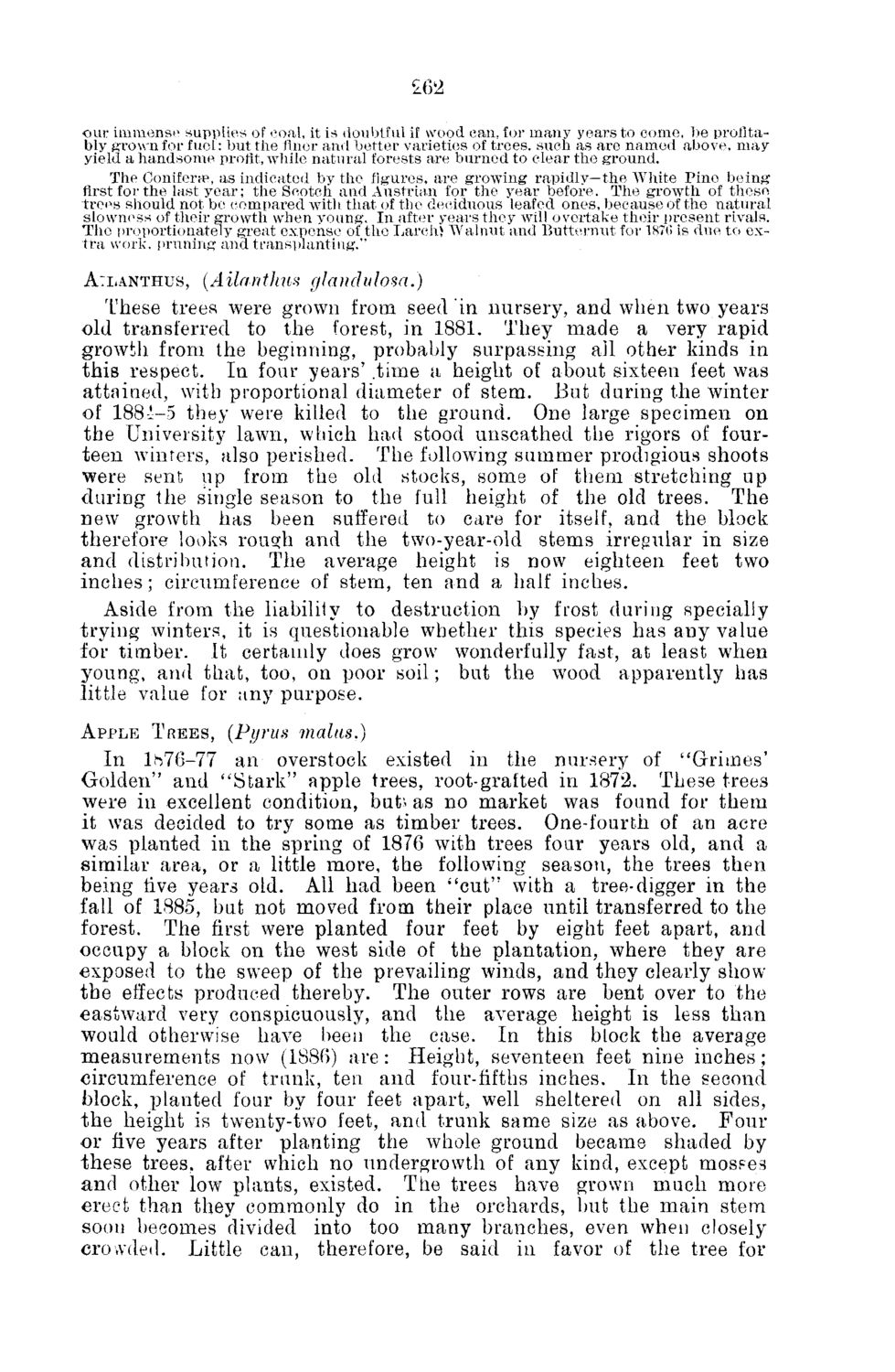| |
| |
Caption: Board of Trustees Minutes - 1886
This is a reduced-resolution page image for fast online browsing.

EXTRACTED TEXT FROM PAGE:
£62 our immense supplies of coal, it is doubtful if wood can, for many years to come, be profitably grown for fuel: but the finer and better varieties of trees, such as are named above, may yield a handsome profit, while natural forests are burned to clear the ground. The Coniferae, as indicated by the figures, are growing rapidly—the White Pine being first for the last year; the Scotch and Austrian for the year before. The growth of these trees should not be compared with that of the deciduous leafed ones, because of the natural slowness of their growth when young. In after years they will overtake their present rivals. The proportionately great expense of the Larch) Walnut and Butternut for 1870 is due to extra work, pruning and transplanting." AILANTHUS, (Ailanthns glandulosa.) These trees were grown from seed in nursery, and when two years old transferred to the forest, in 1881. They made a very rapid growth from the beginning, probably surpassing ail other kinds in this respect. In four years' .time a height of about sixteen feet was attained, with proportional diameter of stem. But during the winter of 188-1-5 they were killed to the ground. One large specimen on the University lawn, which had stood unscathed the rigors of fourteen winters, also perished. The following summer prodigious shoots were sent up from the old stocks, some of them stretching up during the single season to the full height of the old trees. The new growth has been suffered to care for itself, and the block therefore looks rough and the two-year-old stems irregular in size and distribution. The average height is now eighteen feet two inches ; circumference of stem, ten and a half inches. Aside from the liability to destruction by frost during specially trying winters, it is questionable whether this species has any value for timber. It certainly does grow wonderfully fast, at least when young, and that, too, on poor soil; but the wood apparently has little value for any purpose. (Pyrus mains.) In lb76-77 an overstock existed in the nursery of "Grimes' Golden" and "Stark" apple trees, root-grafted in 1872. These trees were in excellent condition, but< as no market was found for them it was decided to try some as timber trees. One-fourth of an acre was planted in the spring of 1876 with trees four years old, and a similar area, or a little more, the following season, the trees then being five years old. All had been "cut" with a tree-digger in the fall of 1885, but not moved from their place until transferred to the forest. The first were planted four feet by eight feet apart, and occupy a block on the west side of the plantation, where they are exposed to the sweep of the prevailing winds, and they clearly show the effects produced thereby. The outer rows are bent over to the eastward very conspicuously, and the average height is less than would otherwise have been the case. In this block the average measurements now (1886) are: Height, seventeen feet nine inches; circumference of trunk, ten and four-fifths inches. In the second block, planted four by four feet apart, well sheltered on all sides, the height is twenty-two feet, and trunk same size as above. Four or five years after planting the whole ground became shaded by these trees, after which no undergrowth of any kind, except mosses and other low plants, existed. The trees have grown much more erect than they commonly do in the orchards, but the main stem soon becomes divided into too many branches, even when closely crowded. Little can, therefore, be said in favor of the tree for APPLE TREES,
| |